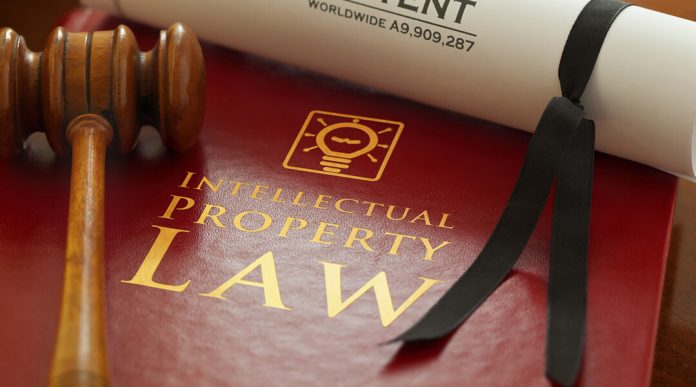This article has been written by Shubham Sharma, from Lloyd Law College.
Table of Contents
Prologue
The term “emoji” initially referred to a pictogram, which was a symbol used to express meaning through physical objects, such as those found in computer icons. Emoticons were used before Emoji to describe feelings using a combination of punctuation marks.
Isn’t it true that emojis are adorable? Emoji are like greenery; their use brings joy to life by efficiently communicating an individual’s feelings. The world has turned increasingly toward digital communication, and the Emoji has become synonymous with both words and expression. It breathes new life into a stale phrase and gives a sentence proper meaning. A significant amount of meaning is given by gestures, facial expressions, and voice tone, which is lost in written language, especially when it becomes colloquial.
The little symbols are used to communicate emotions and facilitate interaction on social media and on smart devices. Emojis are graphic expressions of emotion. We admire how a simple emoji can represent what we couldn’t say with words. Today, in the digital modern world, practically every social media site offers a variety of emoticons, making messaging simple and entertaining. There is hardly anyone who does not use Emoji in their chats, and it is becoming an increasingly common way for people to communicate their emotions. Emojis not only make texts more vibrant, but they also aid in the development of interpersonal relationships by allowing the receiver to experience what the sender is experiencing.
Emojis originated in Japan in 1999, when Shigetaka Kurita, a member of DoCoMo’s IMODE team, created them for mobile phones. Initially, she was inspired by the hearts and symbols found on Japanese pagers and weather forecasts, and she began designing emojis. Emoji is a Japanese word that combines the words “image” and “character.” The initial emoji was a 12 by 12 pixel image that was heavily influenced by Japanese manga art and kanji characters. The World Emoji Day is observed on July 17th.
The word Emoji came from the word pictogram, which was a sign used to express meaning with physical objects, such as those found in computer icons. Emoticons were used before Emoji to describe feelings using a combination of punctuation marks. The case of Ukwuachu v. The State of Texas (2018 WL 2711167) clarifies the distinction between emojis and emoticons: emoticons are a collection of typed keyboard symbols that depict a stylized face that conveys the writer’s tone. Emojis are frequently used to indicate the tone of a writer. Emojis are frequently used to indicate the tone of a writer. So, an emoticon is a smiley face that incorporates a character that may be found on your computer keyboard. It’s an emoji if it’s a small cartoon character that’s free of punctuation, numerals, and letters.
Many people feel that emojis are the next way to replace speech, which Vyvyan Evans dismisses in his book The Emoji Code, explaining that because emojis communicate nonverbally with facial emotions and body language, they ultimately fill an inexplicable hole in our written communication as well.
Unicode and proprietary emojis are the different forms of emojis
Unicode Emoji: The Unicode Consortium is a non-profit organisation that creates standards for keyboard letters and, more recently, emojis. Only roughly 2,000 emojis have been assigned a single number, a black-and-white shape outline, and a brief description by Unicode. Emojis may be recognised across platforms thanks to Unicode standards. A sender can send an emoji symbol that recipients on other platforms can recognise if both the sender’s and recipient’s platforms support Unicode-defined emoji.
Platform Emojis and Proprietary Emojis: Platforms also implement proprietary emojis that are only used on their platforms. These are referred to as “proprietary emojis” (sometimes known as “stickers”). Even if proprietary emojis have similar designs to Unicode-defined emojis, the Unicode-defined numerical value for those emojis will not be shared. As a result, when a proprietary emoji is sent outside of the platform, it usually appears as a logo in the shape of a blank square, signalling that the destination platform does not recognise the character.
Some systems, on the other hand, create proprietary or branded emojis that are radically distinct and unrelated to Unicode-based emojis. In such situations, applicants are more likely to receive copyright protection for their emojis. Emojis covered by third-party property, such as trademarked logos or copyrighted designs, are not adopted by Unicode. Platforms or individuals, on the other hand, can create their own emojis. Twitter hashtag-triggered emojis (such as NFL emoji hashtags on game day) and celebrity emoji sets like Kim Kardashian’s “Kimoji” are examples of “branded emojis.”
The previous section discussed what emojis are and how they evolved, as well as the differences between emoji and emoticons. As a result, while this section discusses the multiple benefits of emoticons, it also discusses how emojis frequently face legal concerns. Business ventures have their own collection of Emoji that are protected by intellectual property laws. When it comes to the preservation of widely used emojis, intellectual property rights are in the spotlight.
Intellectual property rights are often awarded only when a specific intangible asset can be traced back to a single creator or identifiable group of creators, with the creator(s) presumptively entitled to the right; and they are enforced by both civil and criminal law.
Emojis are trademarked and protected
To be recognised under the TM Law, a mark must be distinctive, non-descriptive, and not identical or similar to any other trademark already in use.
Despair Inc. was the first to trademark and protect the emoticon ‘:-(‘ or in the United States. The Smiley Co., on the other hand, controls the trademark and copyright to the iconic smiley in over 100 countries.
It’s possible that various people own trademark rights to the same emoji for different types of items. However, because they cannot establish “use in commerce,” communication-based platforms are the least likely to gain trademark rights in an emoji. Emojis are unlikely to get trademark protection because they are descriptive and substantially similar to other emojis. Whereas marketing organisations aiming to utilise emojis for product branding are likely to meet the “use in commerce” criteria, trademark protection can be obtained. At the same time, when consumers understand emojis as their generic meaning, they can be easily recognised and fall into the generic group. Only when emojis distinguish goods or services in the marketplace can they become trademarkable.
As a result, numerous parties may have trademark rights in the same emoji design, much as there are several overlapping trademark owners for generic phrases such as “apple,” “national,” “sun,” and “united.” However, because trademark protection for emojis is limited, there may be an increase in trademark conflicts over identical or confusingly similar emojis.
Emojis are Copyright protected
Emojis are produced, made, and classified as author’s original artistic works in which the author’s thought is presented in the form of an emoji. To have a copyright, you need two things: a fixed original work of authorship and a physical medium. There is no copyright protection for short phrases. Individual emoji, emoji sets, and House styles may be protected.
Individual emojis are presumed to be copyrightable as graphical pictures, whether proprietary or platform-implemented Unicodedefined. Nonetheless, most individual emojis will not be protected by copyright for at least three reasons:
First, the emoji’s simplicity, which does not express enough to be considered a work of art, and venerable designs that are not original.
Second, emojis are susceptible to the merger doctrine, which removes copyright protection for details that are common or expected in context, which removes copyright protection for details that are common or expected in context. Emojis strive to communicate their ideas as widely as possible. Emojis have also established some standards, such as displaying face emojis in bright yellow, which are now likely to be scenes a faire. This supports the merger doctrine, which states that when an idea can only be conveyed in a limited way, it must be protected under copyrights. Emojis are in this situation.
Third, though Unicode’s IP policy isn’t entirely clear, it’s likely that Unicode either disclaims ownership of its emoji definitions or freely offers unrestricted use of them. Because most platform-specific implementations of Unicode-defined emojis are derivative works of Unicode’s definitions, most implementations should be derivative works of Unicode’s definitions. Some platform implementations, such as Apple’s water pistol representation of the pistol emoji, differ so much from Unicode’s definition that they aren’t considered derivative works. Platforms can only claim copyright for incremental changes to the Unicode outline for those emojis that qualify as derivative works, which may be so minor that they do not qualify for separate copyright protection.
This means that Emojis are similar to fonts and typefaces in that they are copyrighted and licenced by the major tech businesses that provide emojis for use. After studying emoji usage and protection in trademarks and copyrights, the question of whether an emoji is patented or protected under designs is commonly asked. For example, Apple must purchase, licence, or produce the fonts that are used on their platforms, including their emojis. As a result, Apple’s emoji cannot be utilised without first obtaining authorization from Apple’s legal department.
This does not imply that Apple has received patent protection for the emojis it has created.
According to the Apple patent, the User Interface enables faster and more efficient communication. A patent has been granted to Meemo, a licencing, marketing, and distribution company, named “Word recognition and ideograph or in-app advertising system” (US 9152979). As a result, companies are unlikely to get patents for the emojis themselves. However, applications based on emojis, such as those that make it easier to utilise emojis, may be patented if they meet the patentability conditions. Simply put, if an entrepreneur or business owner wants to use an emoji in their company’s logo, marketing campaigns, or to breed the emoji on a T-shirt, a cup, or any other product, they must first obtain the owner’s permission, which is always the case in the case of any IP protected intellectual property.
Indian Court deciding on ‘LOL’
A criminal complaint has been filed against 46 BSNL employees for sending emoji to a WhatsApp group. Following that, the complainant filed a criminal complaint, claiming violations of the Information Technology Act of 2000, the Tamil Nadu Prohibition of Harassment of Women Act of 2002, and the Scheduled Caste and Scheduled Tribes (Prevention of Atrocities) Amendment Act of 2015. The complaint was determined to be without merit and was quashed by the court, but the judge thought an apology was in order.
The Court did, however, consider the meaning of the LOL emoji, as the petitioner argued that the emoji accurately reflected their emotions and intent. The court determined that many smileys have distinct emojis, and that, in the context of the lawsuit, “everyone has a right to express their sentiments and communicate their ideas.”
Conclusion
Emojis are essential in communication because they help people grasp textual language more effectively. Emoji and emoticons are useful for enhancing the meaning of a message because they are easily comprehended. Regrettably, the Law is set to stifle Emoji’s ability to communicate. Because the requirements for protecting emojis have been clearly defined, the Emoji has grown in complexity over time as a result of Intellectual Property Law. Emoji may be a fun tool to utilise for the time being, but their development and continuous use should be closely monitored. Emoji protection has already begun on a large scale in nations such as the United States; however, India is still in the early stages of growth and has yet to encounter an issue coming from emojis, as emojis are still a new mode of communication.
LawSikho has created a telegram group for exchanging legal knowledge, referrals, and various opportunities. You can click on this link and join:
 Serato DJ Crack 2025Serato DJ PRO Crack
Serato DJ Crack 2025Serato DJ PRO Crack











 Allow notifications
Allow notifications


